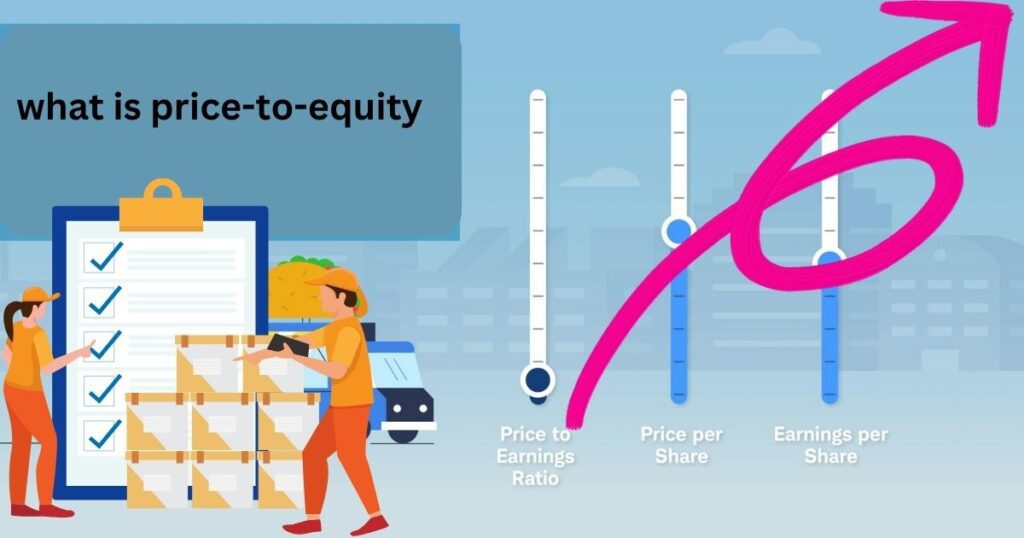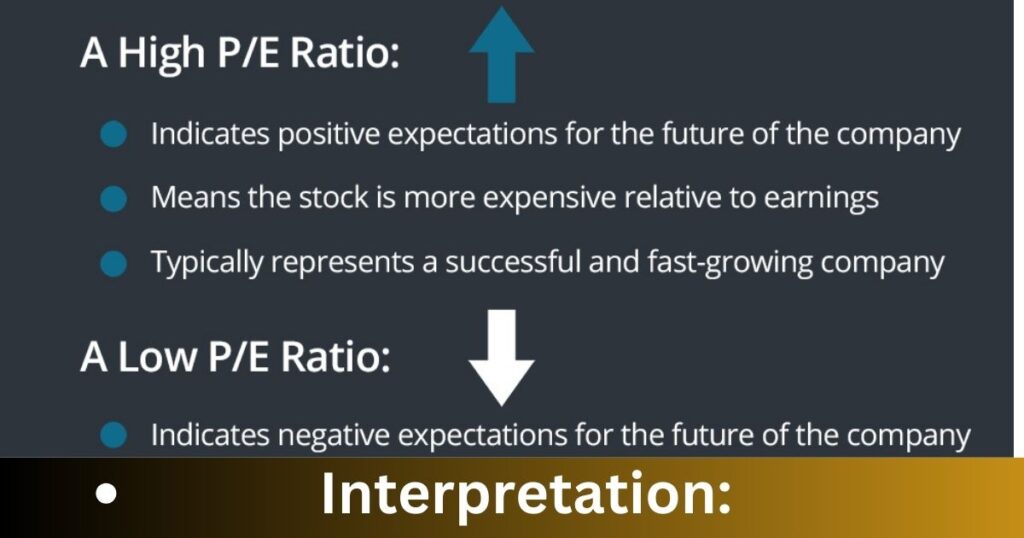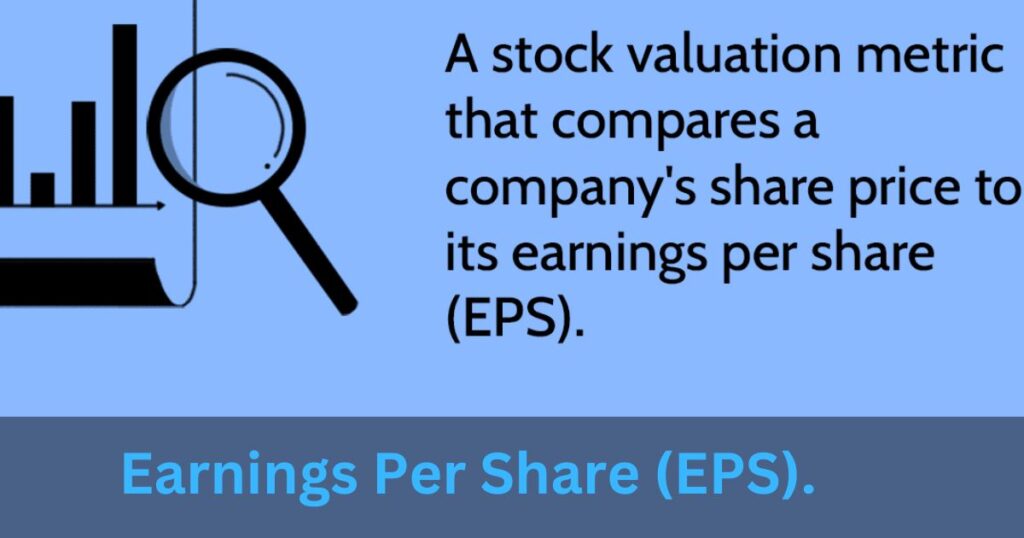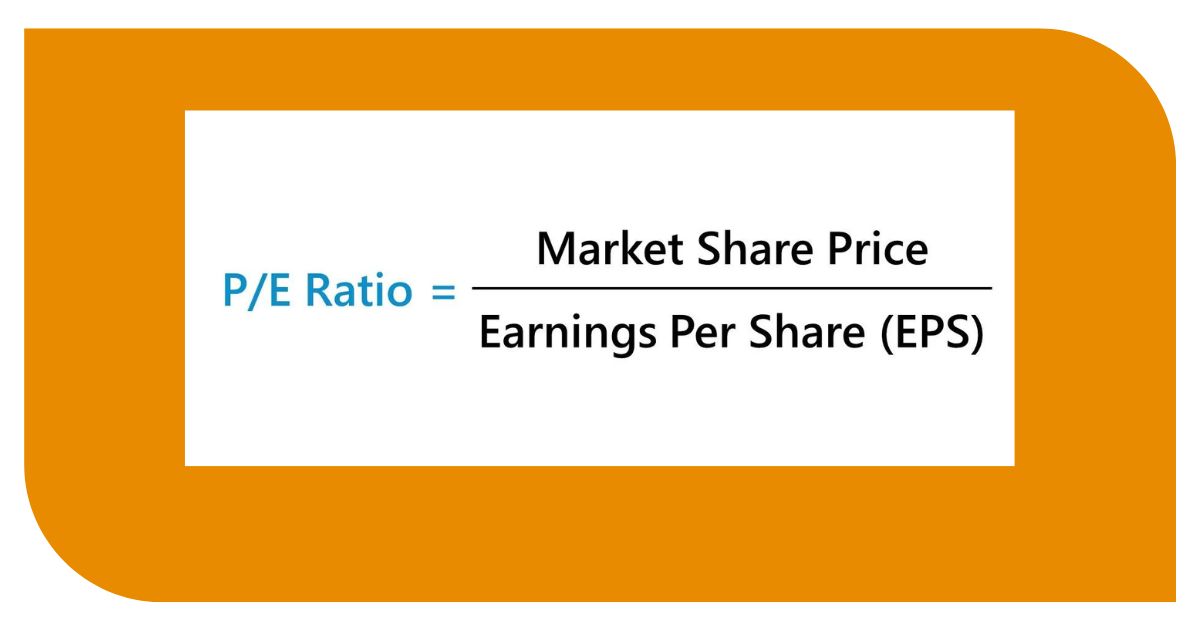What is Price-to-Equity ? The P/E ratio is a financial measure that evaluates a company’s share price in relation to its earnings-per-share (EPS). The price-to-earnings ratio is calculated by dividing market share prices by earnings per share.

Understanding the Price-to-Equity:
Calculation: P/E Ratio = Market Price per Share / Earnings per Share
Interpretation:

- A high P/E ratio suggests that investors are expecting higher earnings growth in the future.
- A low P/E ratio may indicate undervaluation or a lack of growth expectations.
Variations:
- Forward P/E considers estimated future earnings rather than past performance.
- Trailing P/E uses historical earnings data.
Significance of Price-to-Equity:
- Comparative Analysis: Helps compare companies within the same industry or sector.
- Investor Insight: Indicates market perception about a company’s growth potential.
- Risk Assessment: High P/E ratios might suggest higher risk if future earnings growth doesn’t meet expectations.
- Market Sentiment: Reflects investor confidence or skepticism about a company’s future prospects.
Factors Influencing Price-to-Equity:
- Industry Trends: Different sectors might have different average P/E ratios due to varying growth expectations.
- Economic Conditions: Market sentiment can impact P/E ratios during economic upturns or downturns.
- Company Performance: Strong earnings growth often correlates with higher P/E ratios.
Application in Investment:
- Valuation Tool: Assists in determining if a stock is overvalued or undervalued.
- Risk Assessment: High P/E ratios may pose higher risk if future growth doesn’t meet expectations.
- Long-term Perspective: Provides insights into the market’s perception of a company’s future potential.
Understanding the price-to-earnings ratio aids investors in evaluating a company’s stock by considering its earnings performance in relation to its market value, providing valuable insights into market expectations and potential investment opportunities.
You May Also Like: Which Nifty Bees is Best
The price-to-earnings (P/E) ratio serves as a critical financial metric that provides insight into several aspects of a company’s performance and market perception:
Valuation:
- Relative Value: Indicates whether a stock is undervalued, overvalued, or fairly priced in comparison to its earnings.
- Benchmarking: Helps compare a company’s P/E ratio with industry peers to assess relative valuation.
Investor Expectations:
- Growth Expectations: A high P/E ratio suggests investors anticipate strong future earnings growth.
- Market Sentiment: Reflects investor sentiment about the company’s prospects and market perception.
Risk Assessment:
- Risk Perception: High P/E ratios might indicate higher risk if future earnings fail to meet optimistic expectations.
- Volatility: Can be influenced by changes in earnings, market sentiment, or economic conditions.
Earnings Performance:
- Profitability: Reflects the company’s earnings relative to its market value.
- Historical Analysis: Trailing P/E uses past earnings, while forward P/E incorporates future expected earnings.
Investment Decision-making:
- Long-term Prospects: Helps investors assess the potential for future growth and returns.
- Value Investing: Guides investors seeking undervalued stocks based on lower P/E ratios.
- Growth Stocks: High P/E ratios often align with companies expected to achieve significant growth.
Comparative Analysis:
- Industry Comparison: Enables comparison of companies within the same industry or sector.
- Benchmarking: Aids in evaluating a company’s performance against market standards.
Market Perception:
- Market Confidence: High P/E ratios can signify confidence in the company’s growth potential.
- Investor Sentiment: Low P/E ratios might suggest skepticism or undervaluation.
Is a high or low PE ratio better ?
The context will determine whether a low or high price-to earnings (P/E ratio) is more beneficial. A high P/E often indicates that investors expect robust earnings growth in the future, which can lead to higher returns. However, it also means higher risk when growth does not meet expectations.

Low P/E may indicate undervaluation, or slower growth prospects. This could be an opportunity for value-oriented investors looking for bargains. High P/E ratios can be a good thing, as they indicate growth potential. Low P/Es may signal undervaluation.
Overall, the P/E ratio is a versatile tool providing a snapshot of market sentiment, investor expectations, and the relative valuation of a company’s stock. It aids investors in making informed decisions about investing in stocks based on growth prospects, market trends, and risk assessment.






